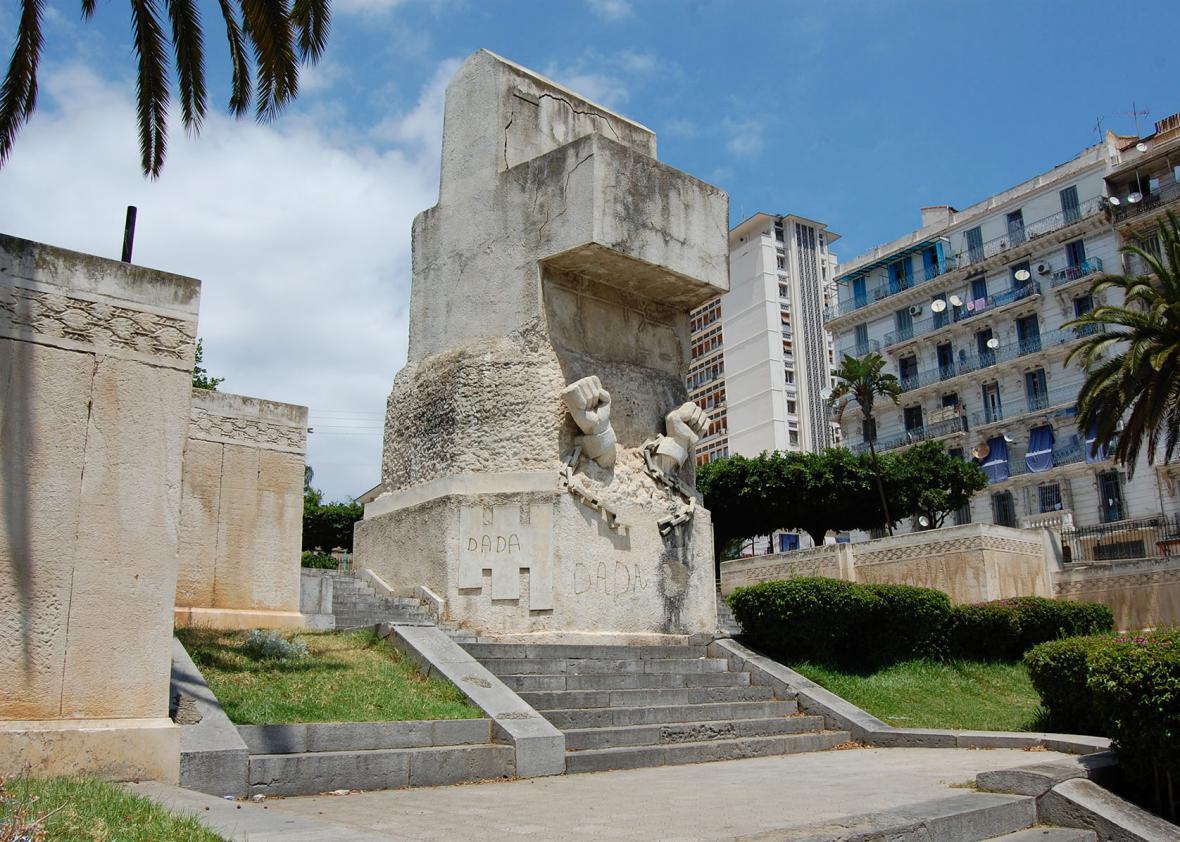What can be done with Confederate statues and monuments whose time has come? There’s the option of just tearing them down and throwing them out, which is satisfying and simple. I’ve seen some excellent replacement ideas floated (for every Confederate, put up a black abolitionist or another worthy crusader for civil rights; for every Confederate, put up a piece of cool public art).
But there’s one more option beyond “remove” and “replace.” In other countries, people have creatively repurposed statues and monuments representing vanquished ideologies. Repurposing—making the original statue into a whole new piece of art—preserves the fact that the statue existed while making it clear that people living in the present day have moved on from the ideology it represents.
In Algeria in 1928, French colonial authorities commissioned a Monument to the Dead (Le Pavois) to commemorate the fellowship of French and Arab soldiers who died in World War I, and to mark the centennial of French colonialism in Algeria. The sculpture, by Paul Landowski, stood in Algiers until the late 1970s. Slate’s Henry Grabar writes that after Algeria gained independence in 1962, other French statues suffered indignities, but the monument remained relatively undisturbed. In 1978, the government finally commissioned artist M’hamed Issiakhem to edit the memorial. “Issiakhem encased the original monument in cement, and crowned it with a pair of fists breaking through chains,” Grabar wrote. Art historian Ugochukwu-Smooth C. Nzewi adds that just as the 50th anniversary of Algerian independence approached in 2012, “cracks began to appear on the monument’s outer shell,” revealing parts of the original sculpture.

Henry Grabar
Recently, journalist Laurence Blair tweeted about a statue of midcentury Paraguayan dictator Alfredo Stroessner that had been similarly transformed by artist Carlos Colombino:
If Issiakhem’s concept emphasized the total encasement of the original monument, Colombino chose to keep parts of the Stroessner statue visible. The statue looks crunched up like an old car in a junkyard; the effect is to emphasize the effort and force it took to wreck the original structure. Blair noted that the new Stroessner statue was “reflective of the reality,” since the dictator’s influence “was dismantled but never destroyed,” with remnants of that time living on in government and culture.
When the Soviet Union fell, statues of Soviet leaders were relocated to a park behind a museum, where they still stand alongside examples of avant-garde art that had been censored by the Soviet government as well as more contemporary sculptures. In post-Soviet Lithuania, an entrepreneur opened an attraction known as “Stalin’s World,” where visitors walk around viewing fallen monuments in a park-like setting built up to feel like a gulag. In a 2006 Associated Press story, the park’s wealthy founder told a reporter, “People can come here and joke about these grim statues. This means that Lithuania is no longer afraid of communism.”
Are these examples at all helpful when we think of editing our own Confederate statues? After all, there are many more sympathizers with the Lost Cause in our country than there were pro-Soviet people in post-Communist Lithuania. If we put our Confederate statues in a park, it’s possible that would simply provide a very nice target for pilgrimages.
I asked my fellow Slatesters what they thought. One colleague recommended pairing every Robert E. Lee statue with a Ulysses S. Grant statue, configuring the two in such a way as to make it look like Lee was surrendering to Grant. (This might be somewhat difficult to execute, given the many Lee statues that depict him riding Traveller.) Another thought we might provide a Fearless Girl for every anonymous bronzed Confederate soldier, arranging her opposite him in eternal battle.
Twitter had some ideas, too.
This thread argued for cutting them off at the feet:
(My Slate colleague Christina Cauterucci recommends then leaving the broken statue in place: “Keep the rotted pile there forever, as a reminder of what we (should) do to racist scum in America.”)
We could retire them all, except the one:
Or give all of them a Shaq of shame:
I’m 99—no, 100—percent sure this one’s not serious:
And, finally, my favorite: Bury them deep.
With the hundreds of Confederate statues in our country, we’ve certainly got scope to try these out.
